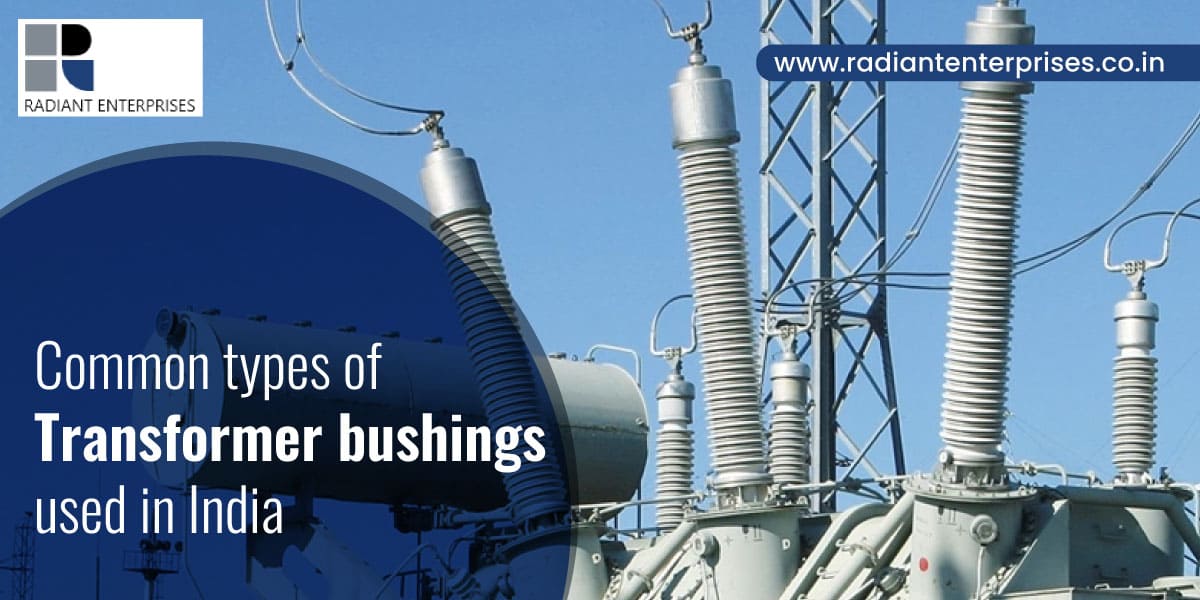
Fill all information details to consult with us to get services from us

An electrified, current-carrying conductor can safely travel through the grounded tank of a transformer thanks to the bushing, which is an insulating structure. Either the conductor is integrated into the bushing (a bottom-connected bushing) or a separate conductor is dragged through the bushing's centre (a draw-lead or draw-rod bushing).
Both solid or bulk type and capacitance-graded bushings are common forms of bushing construction (sometimes called condenser type). The bushings used in a transformer's low voltage winding(s) are typically the solid type with porcelain or epoxy insulator. When it comes to the high voltage winding of a transformer, you want to make sure you utilise bushings with the appropriate capacitance rating for that voltage.
Capacitance-graded Transformer bushings differ from solid-type construction in that conducting layers are embedded at regular radial intervals within the insulation that separates the central conductor from the bushing's insulator (housing). Capacitive elements are formed by the many conductive inserts connecting the bushing's central conductor to the ground. The voltage field around the central conductor can be regulated to ensure that the voltage is spread out more evenly throughout the bushing's insulation.
Between the insulator and the conductor, either in the bushing itself or shared with the transformer, electrical grade mineral oil is commonly utilised. Insulation materials such as resin-impregnated paper (RIP), oil-impregnated paper (OIP), as well as resin-bonded paper (RBP), are frequently utilised in capacitance-graded Transformer bushings. The mineral oil used by capacitance-graded bushings is typically housed within the bushing itself. The condition of the bushings is of great importance to transformer asset owners because they are commonly cited as a leading cause of transformer failure.
Moisture ingress, shorted capacitance-graded layer(s), electrical flashover, bushing misapplication, lightning strike, the broken connection between the ground flange and the sleeve, corrosive sulphur, as well as a damaged tap connection are all common bushing failure modes. These electrical field testing will reveal any flaws in the bushings.
In order to meet the requirements of electrical transformers, bushing designs are tailored to them. The standards established by the IEEE (Institute of Electrical and Electronics Engineers) are taken into account when fabricating a Transformer bushing. Most Indian factories producing Transformer bushings make an effort to conform to standards.
A bushing in a transformer is an insulating component that provides a path for current to flow through the transformer itself. Depending on the design of the transformer, the conductor may be located at the base or the middle of the device. As each transformer has its own unique set of requirements, numerous types of bushings are available with specialised qualities.
There are a few different types of Transformer bushings used in transformers, including those made of solid materials, silicone rubber insulators, oil-impregnated paper, ceramics, as well as resin-impregnated paper. To ensure the bushing is in good functioning order, it is recommended to clean, visually inspect, and check the temperature of the bushing. Before you test the transformer, make sure the bushings are free of dust.
These are the bare minimum in terms of complexity, consisting of just a single conductor in the middle of a ceramic insulator. If power is at a premium, this bushing design is a good choice.
OIP bushings are used in power transformers. Being long-lasting and devoid of partial discharge makes them convenient to use. There are, however, potential dangers while utilising OIP bushing. Failure of the OIP bushings can have a significant impact on the efficiency of the transformer.
To complete the bushings, some mineral oil is mixed in with the resin-soaked paper. These are frequently found in high voltage applications and are easily fabricated into ceramic and composite varieties. Composite RIP bushings have become increasingly common.
SRI bushings are a great alternative to ceramic bushings in modern transformers if you don't want to use ceramic bushings. Using SRIs is advantageous since it prevents wear and tear and malfunction. However, not all transformers have voltage variations that can be matched by SRIs.